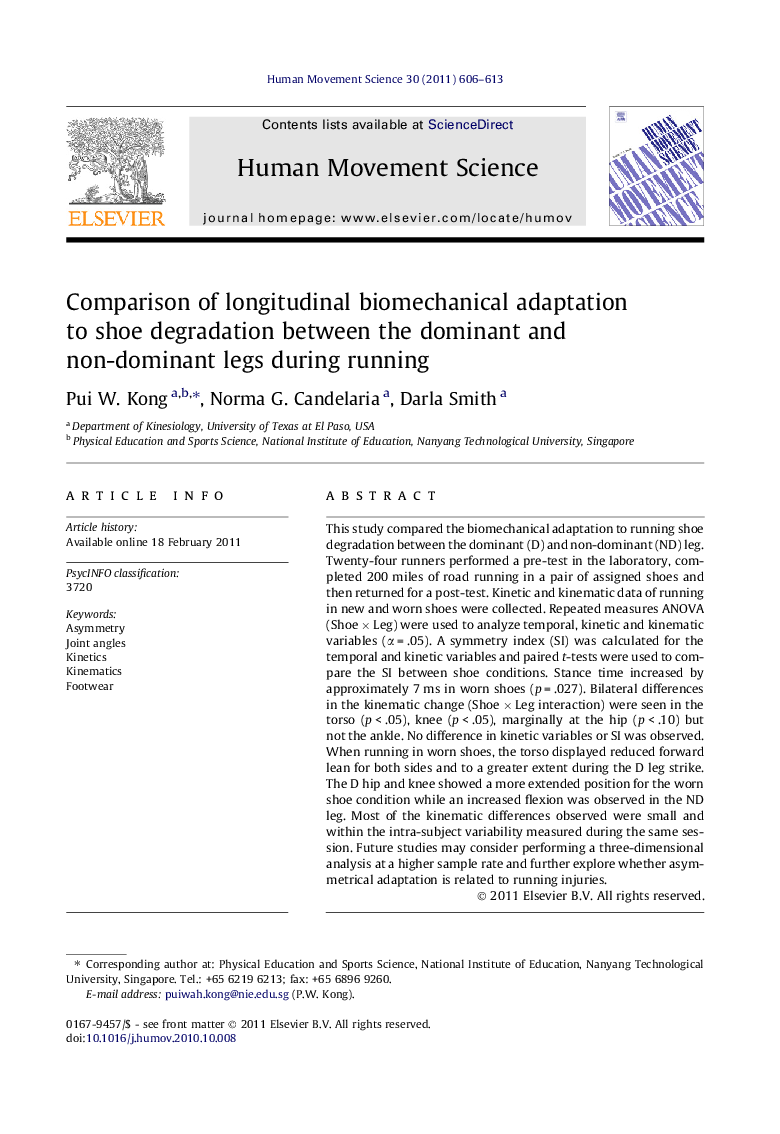| کد مقاله | کد نشریه | سال انتشار | مقاله انگلیسی | نسخه تمام متن |
|---|---|---|---|---|
| 928595 | 922375 | 2011 | 8 صفحه PDF | دانلود رایگان |

This study compared the biomechanical adaptation to running shoe degradation between the dominant (D) and non-dominant (ND) leg. Twenty-four runners performed a pre-test in the laboratory, completed 200 miles of road running in a pair of assigned shoes and then returned for a post-test. Kinetic and kinematic data of running in new and worn shoes were collected. Repeated measures ANOVA (Shoe × Leg) were used to analyze temporal, kinetic and kinematic variables (α = .05). A symmetry index (SI) was calculated for the temporal and kinetic variables and paired t-tests were used to compare the SI between shoe conditions. Stance time increased by approximately 7 ms in worn shoes (p = .027). Bilateral differences in the kinematic change (Shoe × Leg interaction) were seen in the torso (p < .05), knee (p < .05), marginally at the hip (p < .10) but not the ankle. No difference in kinetic variables or SI was observed. When running in worn shoes, the torso displayed reduced forward lean for both sides and to a greater extent during the D leg strike. The D hip and knee showed a more extended position for the worn shoe condition while an increased flexion was observed in the ND leg. Most of the kinematic differences observed were small and within the intra-subject variability measured during the same session. Future studies may consider performing a three-dimensional analysis at a higher sample rate and further explore whether asymmetrical adaptation is related to running injuries.
Journal: Human Movement Science - Volume 30, Issue 3, June 2011, Pages 606–613